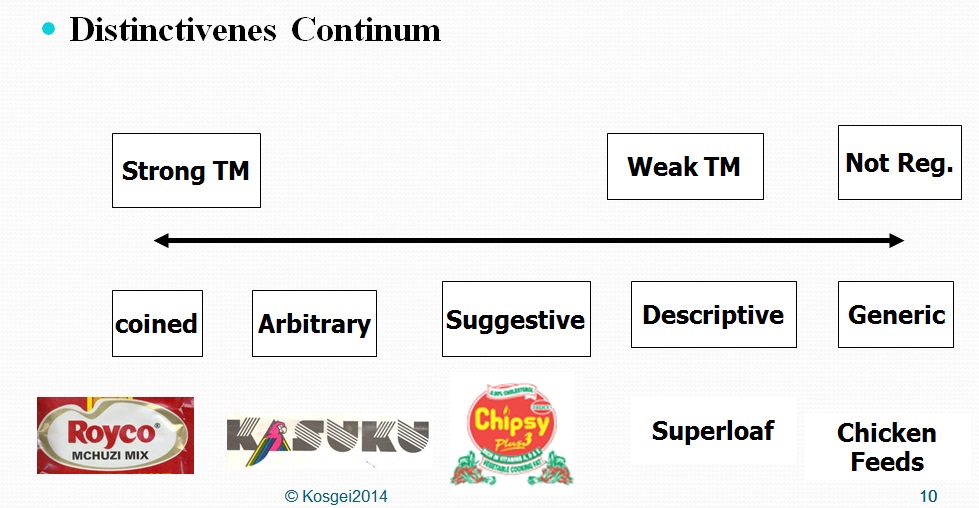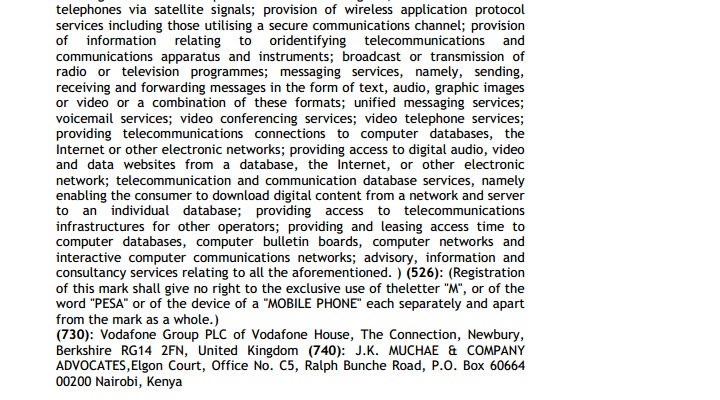Protection of Well Known Trade and Service Marks in Kenya
- Victor Nzomo |
- February 10, 2014 |
- CIPIT Insights,
- Trademark
[youtube=http://www.youtube.com/watch?v=uIBHuqeis3U]
On this subject of well known marks, this blogger invites readers to listen to audio recordings of the presentations made by KIPI trade mark examiners during a workshop held in January 2014 available here. Readers may also wish to download Caroline Muchiri, Advocate’s powerpoint presentation made in February 2014 available here.
Below are my reactions (in bold) to some of the issues addressed in Caroline’s presentation:
Well Known Marks [Perhaps most texts refer to them as “Well Known Marks” because it includes both Trade and Service Marks] are those marks that are considered to have gained reputation through their use in the market. [Which market or sector of the market is relevant?]
As a result of this reputation, well known marks enjoy some level of protection whether or not they are registered. Some well known marks are usually accompanied by registration in the respective jurisdiction where protection is being sought [When registration in all 45 classes is not possible, KIPI has made the case that owners of well-known marks would do well to register them as defensive marks in classes within which they do not trade.]
The question of ‘wellknownness’ of a mark usually arises when there are disputes for instance upon registration of a similar mark by a third party or infringement. It does not arise when examining the mark as to its registrability. [This is interesting. Therefore no special treatment for well known marks seeking registration within Kenya.]
This is usually a claim of protection of an unregistered mark put forth by an owner of a mark when opposing expunging the registration of a similar or identical mark or even in infringement proceedings; [However does this mean that the “‘wellknownness’ of a mark” cannot be a relative ground for refusal of registration of a mark during examination?]
The law on well known trademarks is traced back to the Paris Convention on Protection of Industrial property; Article 6 bis provides for the protection of well known marks by obligating the countries of the Union to afford the highest level of protection to well known marks either on request of an interested party or through its own legislation. [For those who have often wondered what Bis means, it means means twice or repeat. Art. 6 bis is simply an article inserted in the code between Articles 6 and 7. Bis would only be used if there was already an Art. 6.]
The protection under article 6bis is hinged on the following requirements:-
– The mark must be considered by a competent authority of the country of registration or of use, to be a well known mark;
– The interested party must be a person entitled to the benefits of the convention;
– The mark must be used for similar goods. [and disimilar goods too, in some instances?]
Before 2002, Kenya did not have provisions on the protection of well known trademarks. The operative law was derived from TRIPS; In the matter of trademark applications number 43283—4 N’ ICE (word) in the name of Beta Health Care International Limited and the opposition thereto by Smithkline Beecham, (1998), the registrar recognized that despite the absence of laws in Kenya protecting well known marks, the registrar had a duty to refuse the registration of marks that are reasonably well known and used in other countries. This is so, even when the interested party does not have a registered trademark. [ It is hoped that local traders will learn from Beta not to “lift” foreign marks that are well-known in the market and purport to register them in Kenya!]
Section 15A (2) allows an owner of a well known mark to obtain injunction to restrain the use and registration of a similar mark subject to section 38B; Under the Act there is no section 38B and it can only be inferred that the Parliament meant section 36B which is a statutory estoppel to claimant;
[It is surprising that this error has not been corrected. Has KIPI made any efforts address this issue?]
In 1999, the General Assemblies of the Paris Union and WIPO adopted some Joint Recommendations concerning provisions on the protection of well-known marks which provides a guide as to the test to be administered to a mark before the well known status can be conferred; [If these Recommendations are not binding on member states, then our courts can disregard them? How has our jurisdiction treated them?]
a.The degree of knowledge or recognition of the mark in the relevant sector of the public; For instance, smokers, beer drinkers, car dealers are usually treated as consumers who are knowledgeable as opposed to a ‘Mama Mboga’. In the British American Tobacco Kenya vs Cut Tobacco Kenya Limited (2001) [It seems that most of the issues that have arisen around well-known marks appears to be in the alcoholic beverages and tobacco industries. This must be an indication that competition in those industries are exceptionally high. What then would be the effect of a plain-packing legislation as in Australia?]
d. The duration and geographical area of any registrations and or any applications for registration of the mark. [In this regard, reference can be made to the Beta case discussed above where Smithkline were able to show that they had registered their mark in several other jurisdictions.]
e. The record of successful enforcement of rights in the mark, in particular the extent to which the mark has been recognized as a well known mark by other competent authorities; [In the Red Bull vs Bulzai Energy Drink case, the opponents were able to show that they had successfully opposed the registration in other jurisdictions such as New Zealand, Turkey, Croatia, Colombia and the EU.]
The International Trademark Association (INTA), has also developed some guidelines on the test to be applied when determining whether or not a mark is well known; These guidelines are commonly referred to INTA’s Resolution of Well Known Marks; [It is interesting to note that none of the trade mark examiners at KIPI mentioned the INTA Guidelines in their presentations during the KIPI workshop in January 2014. Could it be that the INTA Guidelines are more preferred among trade mark litigators?]
INTA endorses the following criteria for consideration before a mark can be said to be a well known mark:-
a. The amount of local or worldwide recognition of the mark; [The reference to “local” recognition is a significant departure from the Joint WIPO Recommendations. This reference may be of great use when attempting to establish intra-member state well-knowness as opposed to inter-member state well-knowness, if that makes any sense?]
b. The degree of inherent or acquired distinctiveness of the mark; [The Chief Trade Mark Examiner at KIPI has come up with a “distinctiveness continuum” which I believe summarises this requirement quite well. See below.]

c. The local or worldwide duration of use and advertising of the mark. [Indeed, the duration matters!]
d. The local or worldwide commercial value attributed to the mark; [Locally, the question of IP valuation remains pertinent]
COMMENTARY
There is also reference to co-existence of marks. Where a mark has coexisted with another similar mark e.g. Panadol and Sonadol in Kenya, neither of the owners can claim to be entitled to protection of their mark as a well known mark in another jurisdiction as against one another or a third party incorporating a similar mark like ‘Betadol’ [Glaxo-Smithkline dropped the ball on this one. The Sonadol registration ought to have been opposed.]
The test of well known marks has been applied in Kenya in several matters including:-
Unilever Plc Vs Emami Limited on Fair & Lovely and Fair & Handsome. In part of her decision and in ruling that Fair and Lovely was not a well known mark in Kenya. [The Registrar appears to be leaning more towards the INTA Recommendations in this ruling]
Conclusion
There are few marks that would qualify to be protected as well known. They would include Locally-Jogoo for maize flour, Safaricom; M-Pesa [An interesting discussion has arisen on whether the mark “M-Pesa” was registrable at all. Proponents of this line of reasoning argue that the mark M-Pesa is descriptive therefore its application ought to have been refused on the basis it had not acquired distinctiveness. However the majority view was that M-Pesa was registrable, especially where the applicant i.e. Safaricom disclaims the words “M” and “Pesa”. This blogger has dug up the advertisement of the M-Pesa mark in the Industrial Property Journal. See below. Therefore any person would be free to register the word mark “Mobile Money” without Safaricom claiming that such a registration infringes on its well-known mark, on condition that such applicant disclaims the words “Mobile” and “Money”.


Therefore Safaricom clearly cannot claim exclusive rights over the words “m” and “pesa”, however Safaricom can bar any attempt to register the use of the two words as a word mark. In addition, any attempts to register word marks that use the word m and other words with a similar meaning to the Swahili word “pesa” could also be successfully opposed by Safaricom.]
